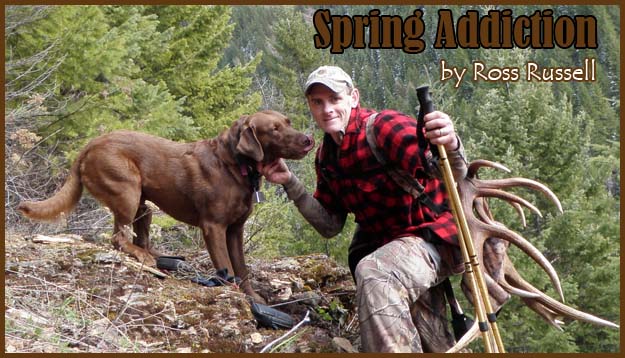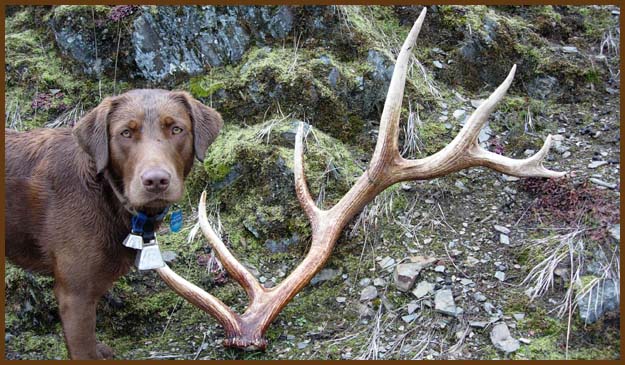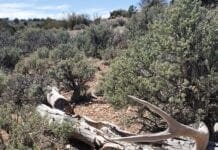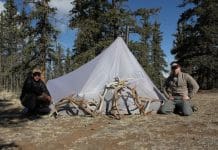Spring Addiction
By Ross Russell
What type of individual is involved in the activity known as shed hunting? This would be anyone that loves being outdoors! Shed hunting is relatively inexpensive, does not require a lot of gear and is a great way to get some exercise and enhance your fitness goals. Spring is a great time to be outdoors and shed hunting gives you an opportunity to learn the country you hunt and too see what bulls and bucks made it through the winter. 
How does someone go about shed hunting and where do you go? My experience is drawn from Northern Idaho and Northwest Montana. Drop times and locations can vary slightly by region. Elk have been conserving energy through the winter and do not travel far at this time of year. You will find them on their winter range as we enter March. Beginning in mid to late March, the larger bulls will start dropping their antlers. As green-up and the winter melt start, you will find bulls in pockets where they feel secure and spring’s new growth is starting to pop out. When we enter April, a good number of the larger bulls will have already dropped and now the larger population of bulls, the 5’s and medium 6’s, will start to drop. By May 1st the majority of antlers will have hit the ground. That being said, if you wait until May to start looking, a good portion of the antlers will have already been collected, especially the easy ones or the ones that are easily seen in the wide open. Shed hunting is an activity that has seen tremendous growth in popularity over the last 10 years, so the competition can be fierce!
I typically begin looking in mid to late March and will be out until early June. Each year I try to find the zone or elevation where the majority of the elk wintered depending on snow depth, & or, follow the melt and green line as it progresses up in elevation. Bulls will not typically run with groups of cows and will be in bachelor groups. If you can find where a bachelor group wintered together, you can make a sizeable haul in a relatively small area.
Key spots and tips where I tend to find antlers year in and year out are:
1. South-facing slopes that have afternoon sun, security cover close by and early green-up.
2. Bedding areas close to feeding area.
3. Rocky benches that melt earlier than surrounding areas.
4. Look for large tracks. Big Bulls have large tracks. If you find large tracks and it is in March, or early April, chances are the antlers are not too far away.
5. When a bull drops an antler, he may drop its mate close by or he may pack it for several days. The larger the antler, the greater the likelihood you can find the other side. That being said, I have looked for matches many times to never find them. Rejoice in the sets that are found side by side, as they are few and far between.
6. The best shed hunters scout with binoculars before the bulls start to drop and once they start hitting the ground, they lay a lot of boot tracks! The more you walk in the right areas, the greater return in investment you will have.
7. Use your binoculars. Scan entire hillsides, either looking for an antler, antler tip or bulls still packing. If left undisturbed, chances are he will remain in the area and you can come back later to finds his antlers.
8. Scan everything closely when in timber or in brush that you feel may hold an antler.
9. Grid an area with flagging tape if looking for the match. This will allow you to pick different lines and not duplicate your work, as often a new line of just a few feet depending on vegetation can be the difference in collecting the bounty!
As with many activities, you can make it as difficult as you want. In the end, the more boot tracks you lay, the greater your results can be in finding antlers. Be sure to check your state’s regulations on shed hunting, as many have established seasons. Remember, get out and enjoy a wonderful time in the great outdoors but try not to stress the animals, they have had a tough few months of surviving the elements.

















